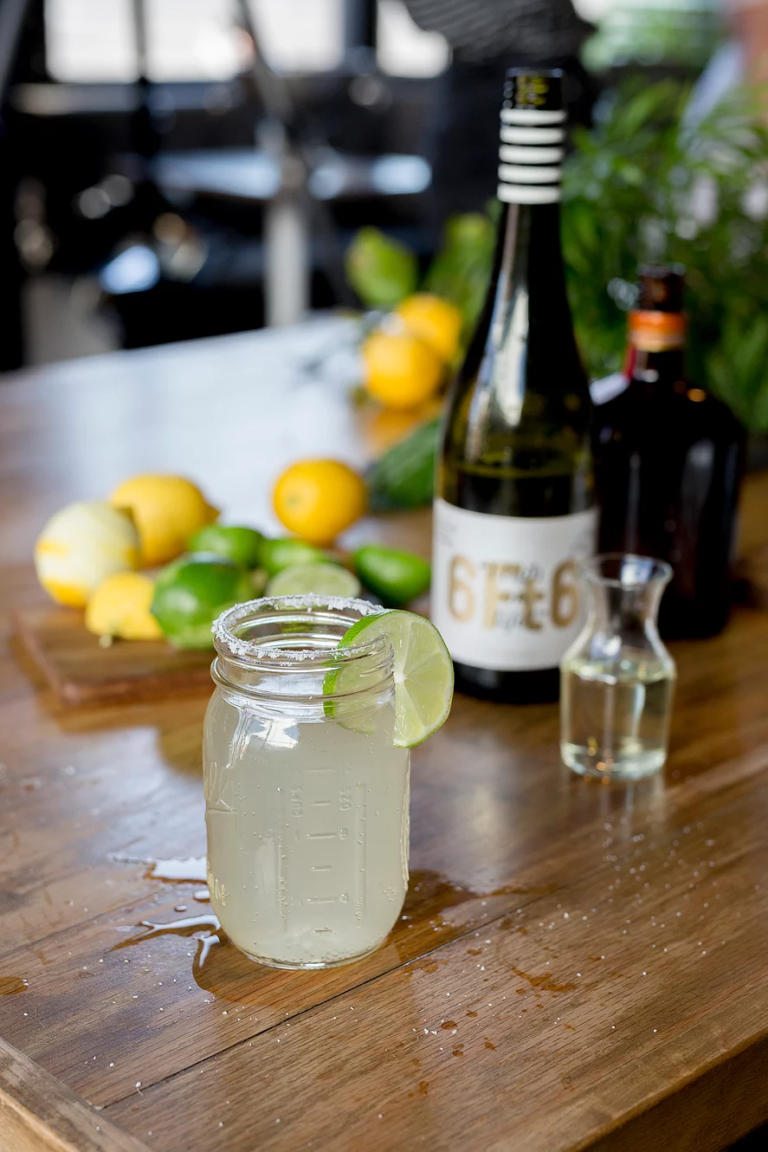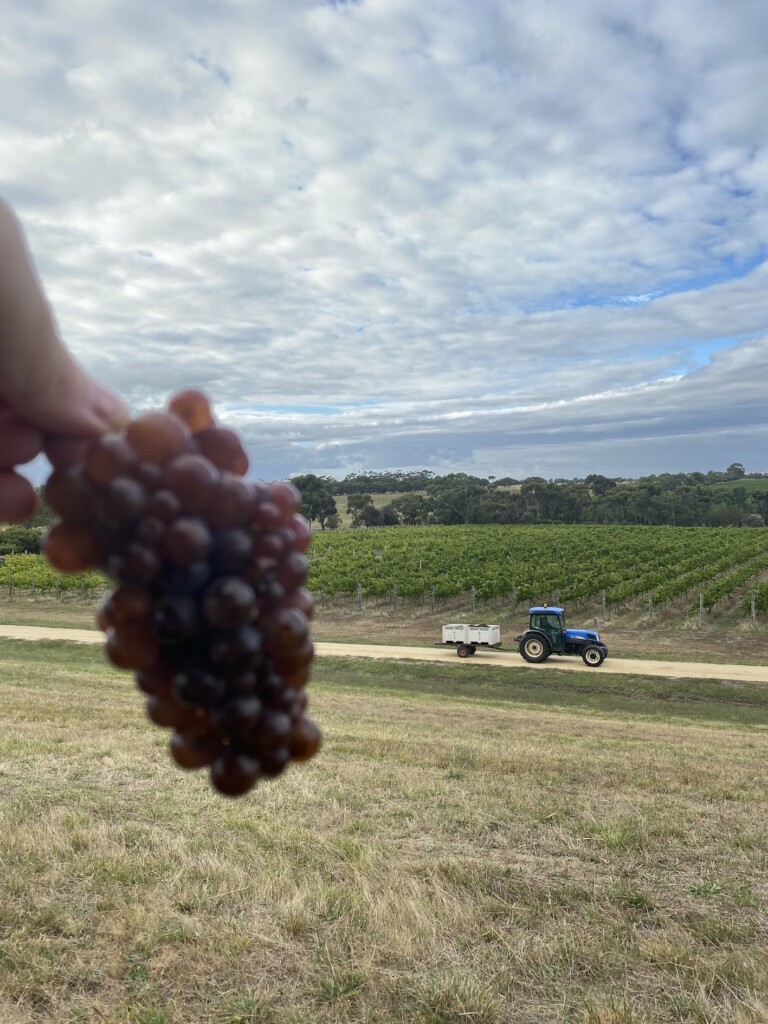Weird Wine Terms Explained
Get down with the wine lingo

Have you ever secretly wanted to punch a “wine expert” in the nose? Especially when they start throwing around terms that just don’t seem to have anything to do with what is essentially fermented grape juice? Do your eyes unintentionally glaze over at the mention of “legs” or “minerality”?
But, have you ever heard a vino described with terms like “cigar box”, “earthiness” or “butteriness” and kind of secretly wished that you could throw those terms around too (after you punched the offender in the nose, obv)?
Wine descriptions exist to help us mere mortals choose our next bottle and they can tend towards the opaque or… wankery – but they do come in handy if you’re down with the lingo.
Here’s a succinct list of weird wine terms and what exactly they mean, to help you on your next wine purchasing spree, or for you to throw around at your next wine tasting…
What does ACIDITY mean?
Wines with high acidity taste tart or zesty. After you swish the wine around in your mouth, you may notice a tingly sensation on the sides of your tongue and a flood of saliva (mouth watering) – this is acidity.
Acid is an important ingredient in a “balanced” wine, if a wine is all fruit and no acid, it can taste “flabby” (hot tip – never say “flabby” to a wine maker, they might add you to their next grape crush).
What does a ‘BIG’ wine mean?
Describing a wine as “big” means it has a lot of flavour. You can taste it all over your mouth and tongue. Big doesn’t always necessarily mean overly fruit-forward, it can also mean that it has big tannins.
What does a BRIGHT wine mean?
Bright wines are generally high in acidity and make your mouth water. Bright is generally a compliment, feel free to say “bright” to a wine maker – they might pour you a dash extra on your next taste.
What does a BUTTERY wine mean?
Buttery is almost exclusively used to describe Chardonnay and is almost certainly something you’ve heard your Mum say. Buttery indicates the smell of melted butter or toasty oak. Also a reference to texture, as in “a rich, buttery Chardonnay.”
CIGAR BOX flavours for wine?
Cigar box flavours hint at a touch of sweetness and cedar-y scent, and the smoky aromas of American BBQ. A wine described using “cigar box” would definitely have been aged in oak and would be the perfect vino to sip curled up on a leather chair surrounded by musty books.
What is a COMPLEX wine?
Describing a wine as complex simply means that when you sniff it, or taste it, the smells and flavours change. If you can detect the smell of strawberries, and smoke, and autumn leaves, and sage, and slightly burnt toast, you’re probably not having a stroke, just tasting a deliciously complex tipple.
Can a wine be CREAMY?
Wine described as “creamy” is a popular description for wines fermented or aged in oak and can point towards malolactic conversion. If you love a buttery Chardonnay, classic Champagne or smoooooth Cabernet, creamy is the word for you.
What does a CORKED wine mean?
“Corked” describes a wine having the off-putting, musty, moldy-newspaper or wet dog flavour and aroma caused by a tainted cork. It only becomes detectable by smell and taste after the bottle is opened for serving. This is the reason that sommeliers pour a small amount of newly opened wine for “checking” by the host at the dinner table prior to serving the other guests. Hot tip – It’s not so you can check if you like the wine.
EARTHY wine?
Despite what you might think – “earthiness” in wine has nothing to do with whether or not the wine is organic or simply produced. “Earthy” usually means a wine smells a bit grassy or like wet leaves. This isn’t necessarily a bad thing, but you’re not a bad person if you’re not into earthy wines.
Can a wine be FLABBY?
Flabby means a wine has no acidity and, ipso facto, no balance. If it doesn’t make your mouth water or your tongue tingle – it’s probably flabby. Flabby is a no-no.
What does FRUIT FORWARD mean?
Fruit forward wines are fruity and jam-packed with primary fruit flavours that prevail over anything else in the wine. You generally won’t find vanilla, earthiness or spice flavours and aromas in a fruit forward wine.
Fruit forwardness in wine is often mistaken for sweetness. Almost all table wines (as opposed to fortified wines) are generally “dry”, but abundant fruit flavours can trick your brain into believing that you’re tasting sweetness.
JAMMY wine?
Your wine wankery friends may throw around “jammy” as an insult. Wines described as jammy are usually simple and fruit forward. But jammy wines are extremely popular here in Aus, lots of sunshine = fresh, ripe fruits. If it tastes a little like Ribena – jammy is your go to.
What are wine LEGS?
Despite what you may have heard, wine legs are not an indication of quality of wine. It’s actually an indication of the level or alcohol or sugar in your glass. High alcohol wines will collect a higher density of droplets on the sides of the glass and sweeter wines are more viscous, so the “legs” will flow slower down the sides of a glass.
Word to the wise – don’t bother throwing this one around unless you really want to sound like a wanker.
What’s MINERALITY in wine?
Imagine the smell of fresh, wet concrete, or an ocean cliff face – got it? Now imagine that flavour in your mouth. This is not as weird as it sounds and can be a very desirable characteristic in a well-balanced wine. If you’re not super confident, this one might be best left to the experts.
MALO?
We’re getting really technical now, but Malo refers to malolactic conversion, a bacterial conversion occurring in most wines, which converts sharper malic acid (found in green apples) into softer lactic acid (found in milk), this makes the wine softer, rounder and more complex.
Frequently associated with big, rich, buttery Chardonnay, malolactic fermentation must be prevented when fresher, crisper styles are desired.
What does OAKED wine mean?
NOT to be confused with “corked”! Oak is the ultimate non-grape influencer on the flavours and aromas in wine. If you’re a seasoned wine drinker you’ll learn to tell pretty quickly whether or not your vino has had oak contact. In white wine it adds flavours and aromas of butter, vanilla and sometimes coconut. In red wine it adds characteristics often referred to as baking spices or vanilla.
Can wine be SILKY?
Silky is the red-wine equivalent of “creamy”, and is most definitely a compliment. If silky nightgowns are your thing, there’s a good chance you’ll enjoy a silky vino.
What’s TANNIN?
Tannins come from grape skins and can be recognised by a drying sensation in your mouth. Imagine the feeling you would get if you put a tea bag directly on your tongue – that’s tannin. If you give your vino a good swish around in your mouth, this sensation is easiest to detect on your gums, behind your lips, above your teeth. Tannins add structure and balance to wine, and drinking your tannic wine with fatty food – like a Scotch Fillet Steak or Cheeseburger, can beautifully offset big tannins.
Because white wines are not fermented with skins, tannic or tannin is generally a red wine descriptor.
What’s UNOAKED wine?
A wine that is unoaked will not have vanilla, cream, butter or baking spice flavours or aromas. An unoaked white wine tends to be zestier, with citrus flavors, while an unoaked red wine will generally be more tart than its oaky counterpart.
A great way to get used to spotting the difference is to try an oaked vs unoaked Chardonnay or Pinot Noir (two varietals that offer plenty of options on both ends of the oaky spectrum).
What does VELVETY wine mean?
Lush, smooth and silky are all synonyms of a velvety wine. How could it not be a compliment? To imagine velvety, visualise watching perfectly smooth melted chocolate pouring from somewhere off-screen on a Cadbury Dairy Milk ad. Mmmmm, velvety.
Still got a wine term you’re confused about? Hit us up in the comments below, or drop by on Facebook or Instagram and we’ll try to explain in the least wankery way possible.






